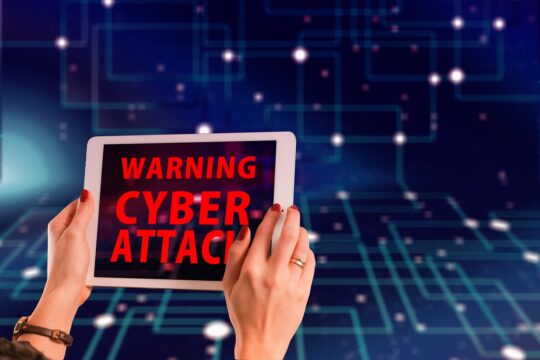The benefits of remote working are undeniable. In the new normal, many professionals have been able to work from a less distracting home office, strike a better work-life balance, and enjoy the advantage of a flexible schedule. On the flipside, remote workers are often more susceptible to work-related privacy and security risks.
The reason is simple. According to a recent report by HP Inc., 70% of remote workers surveyed admitted to doing their personal tasks on their work devices and 69% said that they are using their personal devices to do office work. These figures highlight part of the challenge landscape. Remote devices may not be protected by enterprise-grade security frameworks that are commonly used in the physical workplace. This can leave remote workers exposed to several risks, including identity theft, viruses, phishing campaigns, and more.
The same report also notes a 238% increase in global cyberattack volume since March 2020. The challenge is compounded by the fact that the post-pandemic threat landscape is marked by a rise in not just the volume of the cyberattacks but also their sophistication. Against this backdrop, enterprises must go beyond the traditional approaches to security to safeguard corporate data. Remote workers and IT teams must be on their toes and take a proactive approach to protect their, their employer’s, and customers’ data and privacy. Here are six tips for avoiding common remote work security risks:
-
Use connectivity and collaboration tools equipped with advanced security capabilities
It wouldn’t be far-fetched to say that connectivity and collaboration tools comprise the backbone of the remote work culture. These tools, therefore, must be protected with advanced security features to keep remote workers’ devices as well as confidential enterprise information safe.
New-age communication enablers are offering cloud-based solutions that come equipped with standards-based cryptography. Top videoconferencing tools in the market such as LogMeIn’s GoToMeeting, use TLS encryption to protect sensitive chat, session, and control data shared over the network. This ensures that all communications between the enterprise and remote workers are kept confidential and secure.
-
Implement robust password management
Remote workers are required to use multiple software and platforms, i.e., they manage multiple accounts. To simplify the effort of recalling complex passwords each time they log into each account every day, remote employees often create passwords that are easy to remember. Insecure passwords, however, are easy to crack.
When the same insecure password is used for multiple accounts, it becomes a security nightmare. The problem can be easily resolved by implementing advanced password management tools such as LogMeIn’s LastPass that allow remote workers to create one strong master password and effectively manage all accounts through a centralized dashboard.
-
Promote strong cybersecurity hygiene at all levels
A recent report estimates that 95% of cybersecurity breaches are caused by human error. Cybercriminals can easily exploit human vulnerabilities stemming from inadequate cybersecurity awareness and cause disruption in a matter of seconds.
To avoid these risks, enterprises must encourage employees to implement robust cybersecurity hygiene. It includes using strong, unique passwords; not clicking on unverified links; only using applications and tools from legitimate sources; not using public Wi-Fi; not leaving personal devices unattended, etc.
This can be achieved through a comprehensive cybersecurity awareness program that includes training, awareness campaigns, and auditing tools. Doing so will empower the remote workforce to be proactive in identifying and reporting threats, thereby minimizing the scope of breaches.
-
Incorporate multi-factor authentication
Enterprises can limit authorization levels and grant the minimum access to sensitive information required for a professional to perform their function. This approach ensures greater data privacy and secures the network from insider threats stemming from human errors.
Multi-factor authentication is the most advanced approach to safeguard the data and privacy of remote workers as well as corporate assets. Organizations can adopt a zero-trust approach by enforcing multi-factor authentication combining OTPs, biometric-based access, etc., to improve the overall security posture of remote workers and safeguard business-critical information.
-
Keep devices up-to-date and secure
Remote workers often utilize mobile devices and tablets to connect with their peers and clientele. Smartphones, in particular, are crucial to the remote workforce to help meet connectivity needs. However, smartphones and tablets are not invulnerable to existing and emerging threats. Enterprises, therefore, must keep devices updated with the latest operating system (OS) and security software.
Organizations can use remote diagnostic and maintenance tools such as LogMeIn Rescue to not just keep remote workers safe from cyber threats but also enable seamless operations across the board.
-
Use advanced VPN solutions
Businesses need to move beyond hardware-based legacy VPNs and adopt cloud-agnostic and scalable network security solutions to facilitate secure remote access for WFH employees. These solutions enable businesses to provide remote workers easy access to resources, applications, and information on their devices anywhere in the world. This facilitates high levels of flexibility. It also ensures that data remains safe and secure by making remote workers invisible when they are using the network.
The post-pandemic WFH scenario has underscored several cybersecurity and privacy risks for remote workers. Organizations must develop and implement advanced security solutions to address these risks. Doing so will not only ensure the safety and security of the organization’s data but also empower remote workers to do their job confidently while boosting trust and loyalty.











